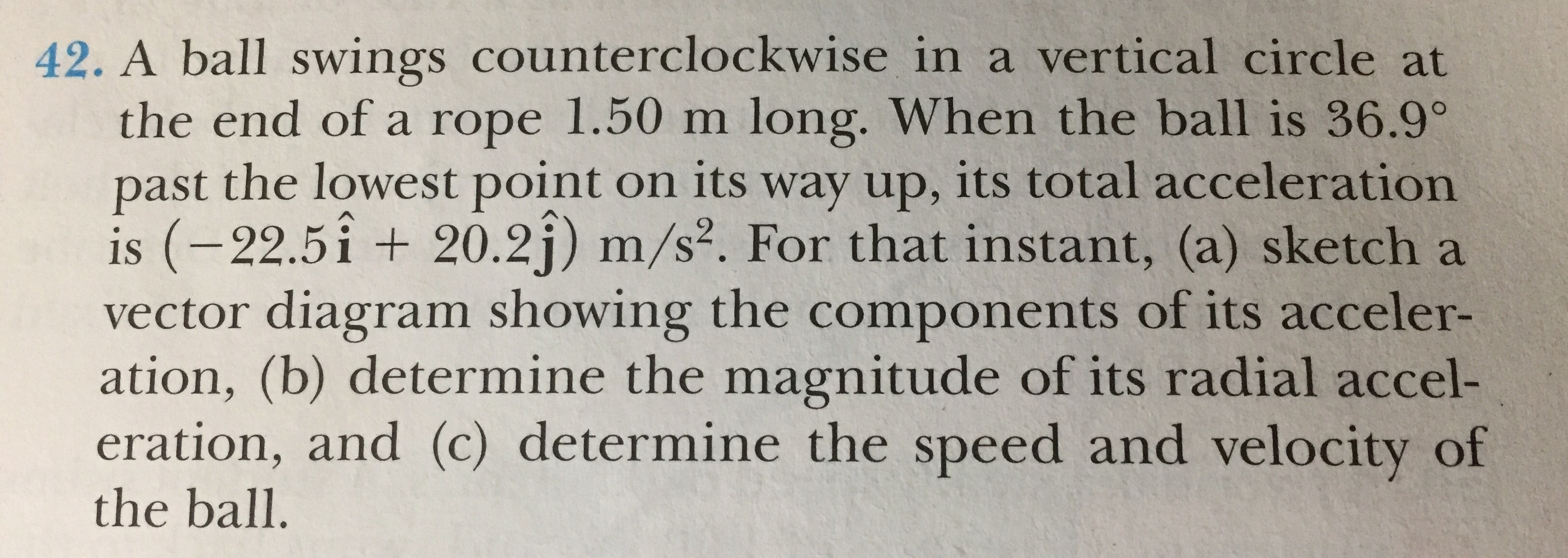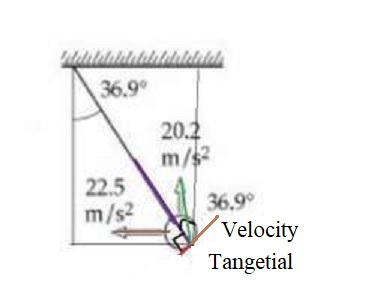Determine the magnitude of a ball's radial acceleration?

I'd appreciate a sketch too, since I'm not sure if mine is correct.

I'd appreciate a sketch too, since I'm not sure if mine is correct.
1 Answer
All answers rounded to one decimal place.
Explanation:

(a) As above.
(b) Total acceleration
We know that
#veca=veca_t+veca_r#
where#veca_t and veca_r# are tangential and radial accelerations respectively.
From the figure
Total acceleration
(c) For circular motion we know that
#a_r = v^2 / r#
where#v# is velocity and#r# is radius of circle in which movement occurs
Inserting given and calculated values we get
#29.7 = v^2 / 1.5#
#=> |vecv|= sqrt(29.7 xx1.5)=6.7" ms"^-1#
Since velocity is tangential it makes and angle
#vecv=6.7cos36.9 hati + 6.7 sin36.9 hatj#
#vecv=(5.4 hati + 4.0 hatj)" ms"^-1#
